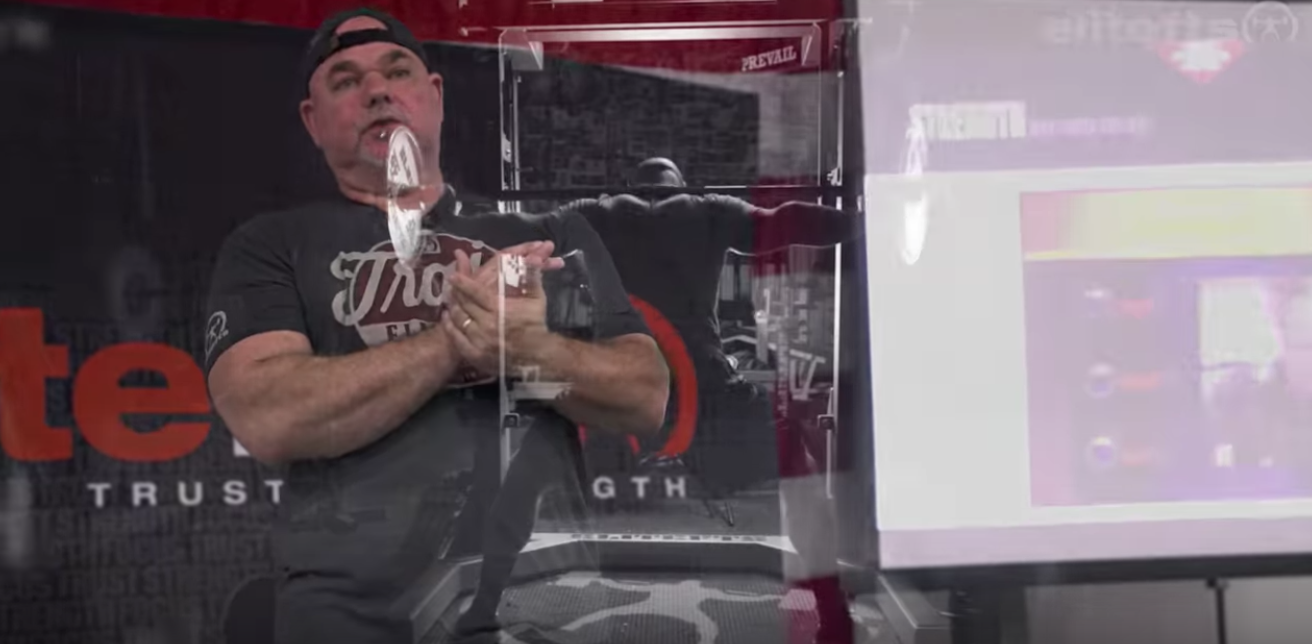
There are three ways to increase muscle tension:
- The Dynamic Effort Method
- The Repetition Method
- Max Effort Method
Dave Tate believes in utilizing all three of these methods. Some programs may push harder on one method than the other, but it’s rare that any good program will not use all three in some way or another.
Here, Dave focuses on the max effort method, which is working up to a “heavy fucking weight that’s generally going to be 90 percent or above.” That includes technical breakdown. But that doesn’t mean you work up until you feel like shit and get hurt.
For beginners, you won’t start them do Seated Good Mornings. You’ll have them to do things that have the bar closer to the center of gravity, which is easier.
"You put a safety squat bar and a power rack on pins and say, 'Stand up.' It’s kind of hard to fuck that up. They will, but it’s hard to do it, as long as you cue them the right way."
The biggest thing with the max effort method? Teaching someone to strain. Breaking a PR is not the intended goal. It’s nice, but not what you need.
Max effort also teaches coordination with heavy weights and how to brace and get tight with heavier loads. Getting tight with a 30 percent is different than getting tight with a 90 percent weight — and breathing! Breathing with that much weight is a huge change.
"How do you get better at lifting heavier weights? Well, you do it by lifting heavier fucking weights!"
Your body will adapt and break down fast under that weight — which is why you don’t want to use this method for more than a week. As a result, Dave wants his clients to change the movement every week. That could be hundreds of movements. In a way, the movement doesn’t entirely matter — the goal is just to strain... and to think.
When doing a deadlift, chances are your mind is screaming, “PULL PULL PULL PULL PULL!” at you while everyone else is shouting, “HIPS HIPS HIPS HIPS!”
By that point, you’re probably zoning out, but when you stall, you get brought back to reality real quick.
But if you’ve been able to strain and think, you can cue yourself. You should still cue people, but they won’t be able to do it automatically right away.
So how do you get to that point where you strain and think?
The max effort method.
Worried about injuries related to the max effort method? Don’t be. Dave’s seen more injuries from high-rep work than he has from max effort work in the gym.
"I’m not going to sit here and sell you on the max effort method. I’m just explaining that it’s important."
Dave uses a block program as an example because the max effort method would be in its own block and reminds the audience of the basics of the block program, which does go by quite a few different names. Normally the max effort method would be used toward the end of a program, usually toward an upcoming meet.
Still, a program is usually only limited to three or four weeks. Dave says you can’t get enough work done unless you’re doing multiple meets a year, to be able to do the things the max effort method allows you to do.
If you’re injured or sore, just slow the tempo down for the max effort method. He’d do a single and do it very slowly after surgeries.
"I used to say 10 percent of your max effort exercises should be the deadlift, 20 percent should be good mornings, and the rest should be some type of box squat. I don’t necessarily think that’s true. I don’t do that. I don’t have my people do that. That’s what we used to do at Westside when I was there. I can’t comment on what they’re doing at Westside now, but I probably doubt they’re sticking to that same rule."










